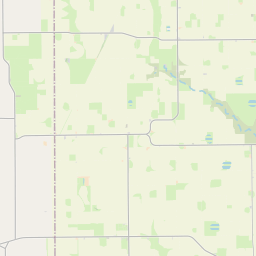First Baptist Church of Floydada
Historical marker location:





On July 19, 1891, The Rev. I. B. Kimbrough and a small group of worshipers met in the dugout home of Joe Arnold to organize the Floyd City Baptist Church. The congregation conducted early worship services in the North Side School building and at the local Methodist church. After the town's name was changed to Floydada, the church was renamed First Baptist Church of Floydada. Several traveling ministers served the congregation during its early years. The Rev. R. E. L. Muncy was called as first resident pastor in 1897, and he organized the first Sunday School in 1899. The congregation completed its first frame sanctuary at this site in 1908. Over the years additional property was acquired and larger structures were built to serve the growing membership. Throughout its history, the First Baptist Church has served the community with a variety of worship, educational, and outreach programs. The members and pastors have placed an emphasis on both foreign and home mission activities. The church continues to play an important role in Floyd County history. (1991)
As one of the most visible programs of the Texas Historical Commission (THC), historical markers commemorate diverse topics in Texas history, including: the history and architecture of houses, commercial and public buildings, religious congregations, and military sites; events that changed the course of local and state history; and individuals who have made lasting contributions to the state, community organizations, and businesses.
The state of Texas was once an independent country known as the Republic of Texas. It gained independence from Mexico in 1836 and was a separate nation until it was annexed by the United States in 1845.
The county itself was officially established in 1876 and named after Dolphin Ward Floyd, a pioneer settler in the region. The town of Floydada was designated as the county seat. Agriculture played a significant role in the early development of Floyd County, with settlers primarily engaged in livestock raising and crop farming.
In the late 19th and early 20th centuries, Floyd County experienced a boom in population and economic growth. The construction of the Santa Fe Railroad in the area facilitated transportation and trade, leading to the establishment of new businesses and industries. The discovery of oil in the early 1900s further fueled the county's growth, attracting oil companies and boosting the local economy.
Over the years, Floyd County has faced various challenges, including devastating droughts and the Great Depression. However, the community has exhibited resilience and perseverance, bouncing back from these hardships. Today, the county continues to be primarily rural, with agriculture, oil production, and wind energy serving as significant economic contributors.
Overall, Floyd County's history is a testament to the spirit of its residents and the determination to overcome obstacles while maintaining a strong sense of community identity.
Floyd County Timeline
This timeline provides a condensed summary of the historical journey of Floyd County, Texas.
- 1876: Floyd County is established and named after Dolphin Ward Floyd, a pioneer and Texas Ranger.
- 1880: The first permanent settlement is established in Floyd County.
- 1890: The county's population reaches over 1,000 residents.
- 1890s: Ranching becomes the primary economic activity in the area.
- 1907: The county seat is moved from Kai to Floydada.
- 1929: The Great Depression hits Floyd County, leading to economic hardships for many residents.
- 1930s: The Civilian Conservation Corps completes several projects in the county, providing much-needed employment opportunities.
- 1940s: Floyd County experiences a population boom due to the discovery of oil and gas reserves.
- 1950s: The construction of U.S. Route 70 through Floyd County improves transportation and access to the region.
- 1980s: The agriculture industry in Floyd County begins to decline, leading to a shift towards other economic sectors.
- 1990s: Education becomes a major focus in Floyd County with the establishment of several school districts.
- 2000s: Wind energy development becomes a significant industry in the county.